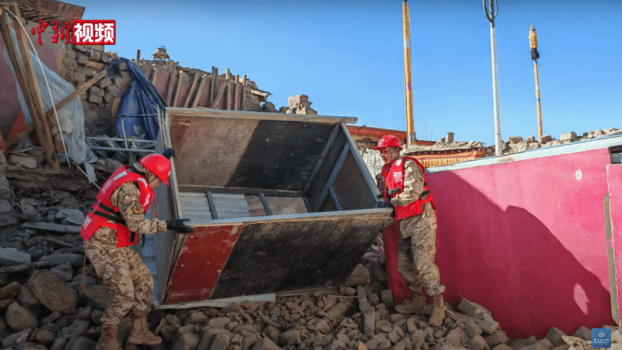 Pin
Pin Image by: Wikimedia Commons
On January 7, 2025, a powerful earthquake struck Dingri County in Tibet, registering a magnitude of 6.8. This region, situated near the border with Nepal and close to Mount Everest, is known for its seismic activity due to the collision of the Indian and Eurasian tectonic plates. The earthquake’s impact was felt across neighboring countries, including Nepal and parts of India.
Table of Contents
Details of the Earthquake
The earthquake occurred at 9:05 AM local time on January 7, 2025, with its epicenter located in Dingri County, Tibet. The tremor was felt strongly in the surrounding areas, leading to the collapse of numerous buildings and infrastructure. The region’s high-altitude terrain and remote location posed significant challenges for immediate response efforts.
Casualties and Injuries
As of the latest reports, at least 126 people have been confirmed dead, and 338 others have sustained injuries, including 19 in serious condition. The earthquake caused extensive damage, with over 27,200 buildings affected and 3,612 homes completely destroyed. In some villages, 80 to 90 percent of homes were razed, leaving many residents displaced and vulnerable.
Rescue and Relief Operations
In response to the disaster, more than 3,000 rescuers have been deployed to the affected areas. Rescue teams are working tirelessly to locate survivors amidst the rubble, often under challenging conditions. The region’s harsh winter temperatures, which can drop to minus 15 degrees Celsius, further complicate rescue and relief efforts. Emergency shelters, including tents and prefabricated houses, have been set up to accommodate the displaced population.
Geological Context and Implications
Dingri County lies in a seismically active zone where the Indian and Eurasian tectonic plates converge, leading to frequent earthquakes. This recent earthquake underscores the vulnerability of the region to seismic events. The extensive damage to infrastructure, including the collapse of homes and roads, highlights the urgent need for resilient construction practices and disaster preparedness. Additionally, the earthquake has raised concerns about the safety of hydropower dams in the region, as the shaking could potentially compromise their structural integrity.
In conclusion, the 6.8 magnitude earthquake that struck Dingri County in Tibet has resulted in significant loss of life and widespread destruction. The ongoing rescue and relief operations are crucial in providing immediate assistance to the affected population. This event also highlights the need for enhanced disaster preparedness and resilient infrastructure in seismically active regions.
Aftershocks and Ongoing Seismic Activity
Following the initial 6.8 magnitude earthquake on January 7, 2025, the region experienced significant aftershocks, including a magnitude 4.9 quake at 8:57 PM local time on January 13, 2025, and a magnitude 5.0 aftershock shortly thereafter. These aftershocks have further complicated rescue and relief operations, as they pose additional risks to already weakened structures and hinder the safe retrieval of survivors. The continuous seismic activity has heightened concerns among residents and rescue teams, emphasizing the need for ongoing vigilance and preparedness.
Impact on Infrastructure and Daily Life
The earthquake has caused extensive damage to infrastructure in the affected areas. Over 27,200 buildings were damaged, with 3,612 homes completely destroyed. In some villages, 80 to 90 percent of homes were razed, leaving many residents displaced and vulnerable. The destruction of roads and bridges has isolated communities, making access to essential services and resources challenging. The harsh winter conditions, with temperatures dropping to minus 15 degrees Celsius, have further exacerbated the difficulties faced by the affected population.
Humanitarian Response and International Aid
In response to the disaster, both national and international organizations have mobilized to provide humanitarian assistance. Rescue teams, medical personnel, and volunteers have been deployed to the affected regions to search for survivors, provide medical care, and distribute essential supplies such as food, water, and clothing. International aid agencies have pledged support, offering financial assistance, relief materials, and expertise to aid in the recovery efforts. The collaborative efforts aim to address the immediate needs of the affected population and lay the groundwork for long-term recovery and reconstruction.
Challenges in Rescue and Relief Operations
The rescue and relief operations have encountered several challenges due to the region’s remote location and harsh environmental conditions. The mountainous terrain and damaged infrastructure have hindered access to affected areas, delaying the delivery of aid and the evacuation of injured individuals. The severe winter weather, including heavy snowfall and freezing temperatures, has posed additional risks to both survivors and rescue teams. Moreover, the ongoing aftershocks have created an unstable environment, increasing the risk of further collapses and complicating rescue efforts. These challenges underscore the need for coordinated and adaptive strategies to effectively address the evolving situation.





























